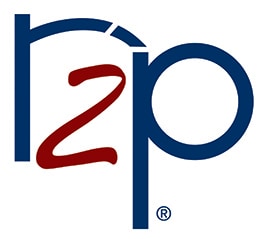Research to Practice (r2p)

Research to Practice (r2p) is an approach to collaborations with partners and stakeholders on the use, adoption, and adaptation of NIOSH knowledge, interventions, and technologies. We need to move research into practice in order to reduce and eliminate injuries, illness, and fatalities. At NIOSH, we feel it is important to work with our partners to:
- identify and understand audience needs;
- design, plan and conduct studies into workplace policy, procedure, and/or practice;
- translate research findings into practical and relevant products and practices;
- disseminate and implement products and practices; and
- evaluate and demonstrate the effectiveness of these efforts in improving worker health and safety.
Read about successful Research to Practice stories in NIOSH eNews.
Six Core Elements for Effective r2p
The NIOSH r2p approach includes six (6) core elements. Each of the elements uniquely contributes to workplace safety. The collaborations and connections between these elements lead to measurable impact and directly aligns with the mission of NIOSH.
Partnerships
A NIOSH partner is any individual, group, or organization (e.g., government, labor, academic, business, trade or professional association) whose collaborative efforts enhance NIOSH-funded research activities and help promote the movement of research into practice. Partners play key roles in activities such as:
- identifying occupational safety and health issues and needs;
- designing, planning, and conducting studies;
- translating and communicating research findings into policy, technology, practice, and/or information products;
- engaging stakeholder and practicing communities;
- implementing and assessing recommended work policies or practices; and
- evaluating or demonstrating the impact of these efforts on improving the safety and health of workers.
Intramural Science
Intramural science is conducted by researchers employed by NIOSH. For more information on NIOSH’s intramural programs, visit NIOSH Programs.
Extramural Science
Extramural science is generated through funding provided by NIOSH to outside organizations. For more information on NIOSH extramural programs, visit NIOSH Extramural Research and Training Programs.
Technology Transfer
Technology transfer is the process by which knowledge, technologies, and interventions are transferred from the Government to the public or private sector.
Communication
Communication is the process through which science is translated into information products, then shared and promoted with an intended audience. NIOSH uses communication tools and strategies to create clear messages, select appropriate formats, and determine effective channels through which the information may be delivered and understood by an intended audience.
Evaluation
Evaluation is a systematic assessment of the extent to which a r2p effort meets measurable objectives, milestones, or goals. Results of evaluations may inform the planning of an effort (i.e., feasibility, or need), process (i.e., tracking), progress toward outcomes and objectives, or provide a final measure of impact.
r2p Tools
At NIOSH, we use the Research to Practice Roadmap guidance document and worksheet developed by The Center for Construction Research and Training to plan our dissemination and help facilitate the use, adoption, and adaptation of NIOSH knowledge, interventions, and technologies.
r2p Partnership Pathways
NIOSH welcomes partnerships with governmental and non-governmental organizations including non-profit organizations, trade associations, academic and research institutions, and the private sector. In order to accomplish our mission, NIOSH seeks to establish formal and informal relationships with partners in order to maximize resources and ensure a safer and healthier workforce.
Pathways to partnership with NIOSH include:
- Establishing a formal partnership agreement with NIOSH, such as a Cooperative Research and Development Agreement, Data Use Agreement, or Memorandum of Understanding.
- Participating on a National Occupational Research Agenda Sector Council.
- Exploring NIOSH Extramural Research and Training Programs to learn more about various funding opportunities.
- Discovering opportunities to unite private sector partners with NIOSH scientists to achieve common goals and “do more, faster” through the CDC Foundation (a private, nonprofit, 501(c)(3) public charity).
- Visiting Federal Register Notices for opportunities to provide comment on NIOSH rules, proposed rules, and information collection activities, attend meetings, and explore potential partnership opportunities.
r2p Technology Solutions
Through our research efforts, NIOSH produces new scientific knowledge and practical solutions vital to reducing risks of injury and death in occupational settings and seeks the assistance of commercial partners to move these solutions into practical application and adoption. This is accomplished by granting licenses to parties wishing to further develop, use or commercialize these inventions.
Use or commercialization of these NIOSH technologies may require a license. A license is a legal agreement which defines the terms and conditions under which a third party may make, use or sell the invention. The licensing of NIOSH technologies is handled by the National Institutes of Health’s Office of Technology Transfer (NIH OTT).
NIH OTT has provided a helpful flowchart of the licensing process to explain the steps to securing a license through NIH OTT for a NIOSH technology.
Find NIOSH technologies available for licensing on the Explore NIH Technologies site and search for “NIOSH.”
